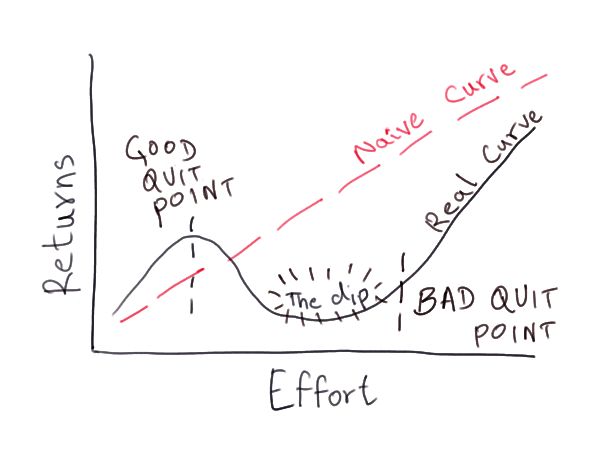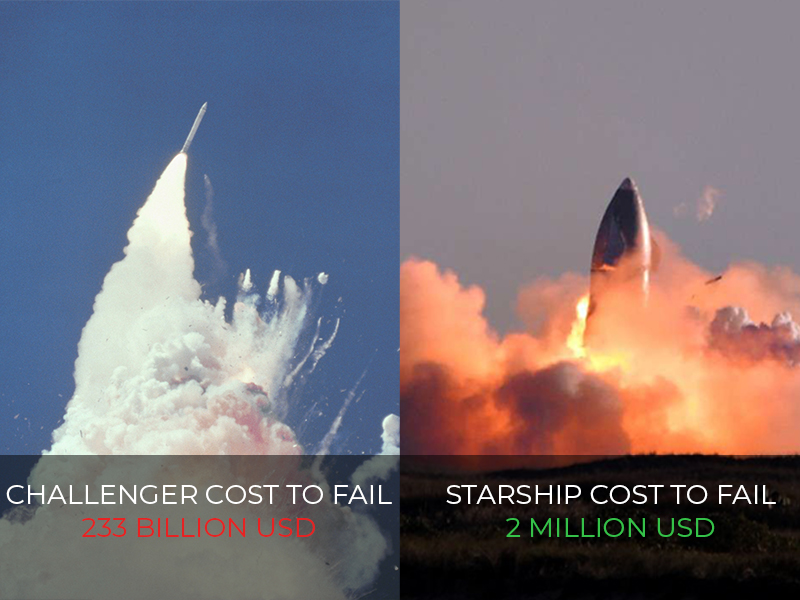 When we say invested deep, we mean this
When we say invested deep, we mean this
The Hardware Valley of Death
We used to think of the Hardware Valley of Death as evil. After all, it's where most startups vanish, including some of our clients.
We had a collective epiphany as a contract manufacturer when we accepted it as good. Yes, we mean it's good for you to be cash-strapped. It's good for your designs to be un-manufacturable. It's good to have supply chain problems. It's especially good to have high COGS. Those are all problems that you can solve. It makes sure only the fittest survive. Otherwise, your market would be awash with mediocre products that nobody wants to buy. The Hardware Valley of Death is the great filter for many, yet it's the ozone layer for those who manage to scale it. Many at the bottom of the valley don't realize this, which brings us to our next topic.
The Dip

The dip looks awfully like the New Product Introduction
Now let's talk about the rock bottom of your project, the Dip.
The dip sits at the bottom of the death valley. It is when you are the least cash flow positive. The pessimist would rather call it you are burning through cash. We discussed earlier that the Valley provides an opportunity for you to beat your competition. After all, everyone gets the same set of problems to deal with. But the question remains, are you equipped for the challenge?
Sleeping on a bean bag in the office, alongside your soldering station surely is noble. Relying on Uber Eats to survive because you're too busy prototyping to cook is stoic. We have been there. But does metabolic damage mean business success? Can you pay your supplier with tears?
In order to pass the Dip, you must have the right team, solid finances, and reliable partners. Getting to the other side requires planning ahead. If you run out of money before being able to launch (and post-launch), what purpose does it serve? When it comes to hardware, it's better not to start if you can't predict what's ahead.
Need cost planning for your product-in-making? Press LAUNCH on the top right corner and let us estimate what your product will cost to manufacture at every level.
Time to Cancel the Space Shuttle (=Your Hardware)

Space Shuttle WAS great. But from a manufacturer's perspective, SpaceX is doing a much better job at commercializing space flight. It's hard to imagine thousands of satellites being launched into orbit to provide the world with cheap internet on the Space Shuttle. That's like us sending you your samples on a private jet! But SpaceX is solving that problem with their low-cost rockets. Low cost=longer runway, more wiggle room to make mistakes.
Now consider your solution as the satellite and your product as the spaceship. What does your project need? What is your audience willing to pay? If you are trying to deliver value (in the case of IoT products, it's mostly data) on an encumbering device, you might need to go back to your designs before wasting your money to realize it's too expensive. Alas, it's usually better to be launching on a Big Falcon than a Space Shuttle.
The runway

When you are at the dip, your runway stands at the edge of a cliff
When we say runway, you get the image of a long stretch of road at your footsteps. In reality, your runway is more like a moving escalator. Your runway doesn't stop when you don't move. It moves beneath your feet. We see that some bootstrapping hardware projects don't realize this. They think they can stop working on their project now and go back to it when they have more resources.
In reality, a hardware project costs resources just to stay alive. So each and every moment you are not taking steps to bring your product to reality, you're losing runway. You are also risking your competitors launching similar products before you.
The difficult part is, as a hardware company at the dip, you are trying to get airborne while climbing upwards. That means your runway is also a mountain.
Don't Quit
%20(1).jpeg?width=800&name=Single_grain_of_table_salt_(electron_micrograph)%20(1).jpeg)
That's a single grain of salt under an electron microscope.
The call to action of this article is to tell you not to quit. Yes, it might seem to contradict what we were saying earlier, but I hope you take our words with a grain of salt. If you have gotten this far in persevering through endless quote emails, failing plastic parts, dysfunctional PCBs, and your firmware giving you the silent treatment, it might also mean that someone else decided to call quits before delivering an awesome product. NexPCB is there to support those IoT innovators out there who have a healthy mix of heroism and realism.
This post was inspired by Seth Godin's book The Dip. You can find the book here

 When we say invested deep, we mean this
When we say invested deep, we mean this


%20(1).jpeg?width=800&name=Single_grain_of_table_salt_(electron_micrograph)%20(1).jpeg)
